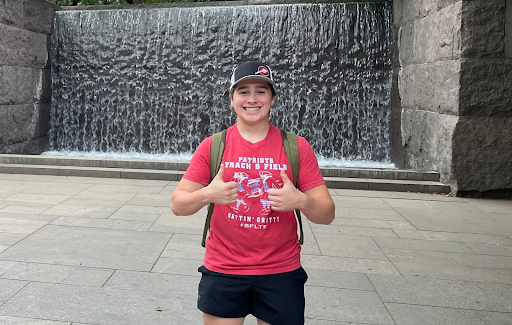Save the world. Thrift.

Save the world. Thrift.
May 23, 2019
As I wandered the color-coordinated aisles at Savers, my hands explored each piece of clothing as my mother stood unimpressed behind me. I felt the need to examine every item by feeling its textures, by imagining the expressive possibilities of the specimen. I surveyed every nook and cranny of the thrift store before I checked out. I feel that it is necessary to ensure that I am getting the best deal. No Tommy Hilfiger shorts or picture frame with geese on it can ever escape my overflowing shopping cart.
Every item has a story, and thrifting gives me an opportunity to be part of the story.
Each clothing item was crafted by someone, most likely another underpaid women in a foreign country. Then it was brought to America to be sold; maybe it was discovered in a major metropolitan shopping mall or a quaint local boutique. Perhaps it was very loved and worn weekly, perhaps the item became a hand-me-down, passed from sibling to sibling. It may have even have been brought on vacation, traveling through states on road trips or soaring above the ocean in airplanes. Or perhaps it slipped off of its hanger and laid on the lonesome floor of someone’s closet for years, then was donated. Maybe this isn’t the piece’s first time in the thrift store.
Maybe it belonged to a pregnant woman or an 11 year old boy who wore that shirt to lacrosse practice. I thrift in order to sell clothes on Instagram (@threadsdelsodak); I let the story continue.
Everyone knows that society has become increasingly more materialistic. In 2014, Americans purchased 60% more clothing than in 2000 and kept the clothing half as long. It requires 2,700 liters of water to create one cotton shirt. That is how much water one drinks in two and a half years. Also,around 20% of industrial pollution is triggered by garment manufacturing.
Fast fashion has damaged the world, and as the middle class grows, it is only going to expand.
It is important that clothing companies start utilizing the “slow fashion” approach by recycling old clothing and decreasing production. Patagonia’s Worn Wear program offers to fix their older items rather than having them thrown out. Being informed on these programs can help us make an impact on the world.








